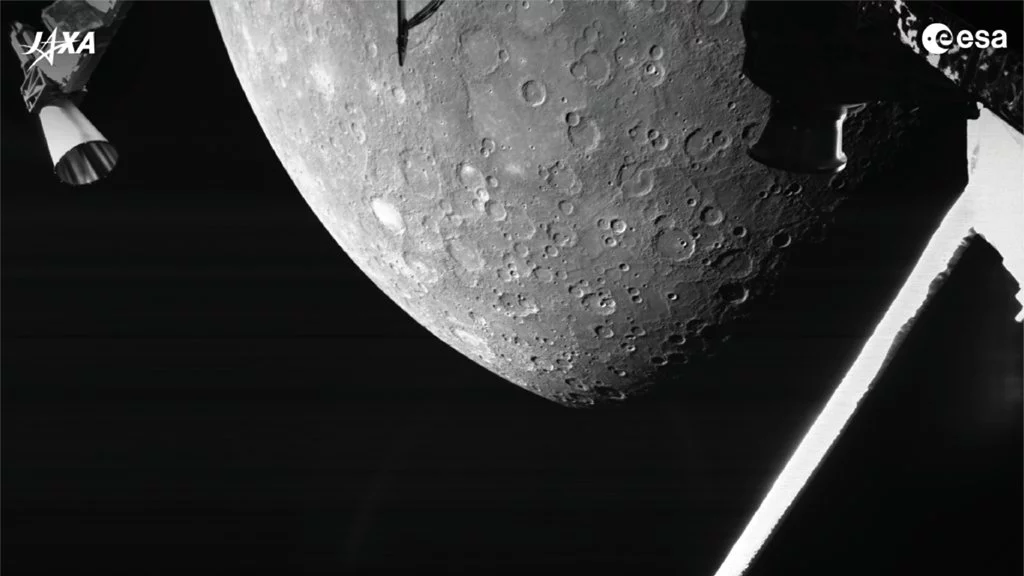The BepiColombo mission to Mercury, launched by the European Space Agency and Japan, has sent back its first pictures of the Solar System's innermost planet, according to a BBC report.
The probe took the images shortly after it flew over Mercury at an altitude of just 200 km.
Controllers have planned a further five such flybys, each time using the gravitational pull of Mercury to help control the speed of the spacecraft.
Also read: How Hanle Observatory In Leh Became The World's Most Popular Observatory
BBC News cited Prof Dave Rothery from the UK's Open University as saying: "It's just happy snaps as we're whizzing by, but what a wonderful view we've had of the planet. You're seeing a cratered surface, but also areas which have been smoothed by vast outpourings of volcanic lava. Some of the brighter areas are where there've been volcanic explosions in the distant past, and you can also see where today some of the surface material is dissipating to space.”
Although Bepi is a long way from beginning proper science operations, quite a few of the probe's instruments were switched on for the flyby. Phenomena such as magnetic fields and some particles can be sensed.
Dr Suzie Imber, from Leicester University, UK, told BBC that the purpose of the flyby, and the six flybys in total at Mercury, is to help change the trajectory of the spacecraft and slow it down.
"Eventually, in a few years from now in December 2025, our spacecraft and Mercury will be in the same place going in the same direction.”




















